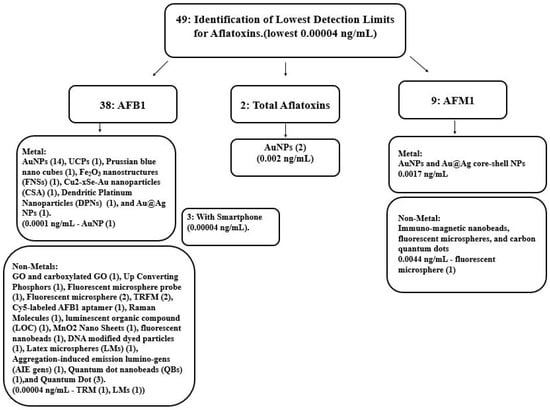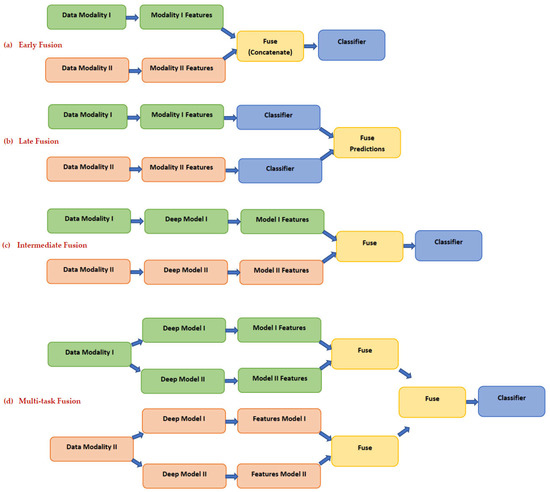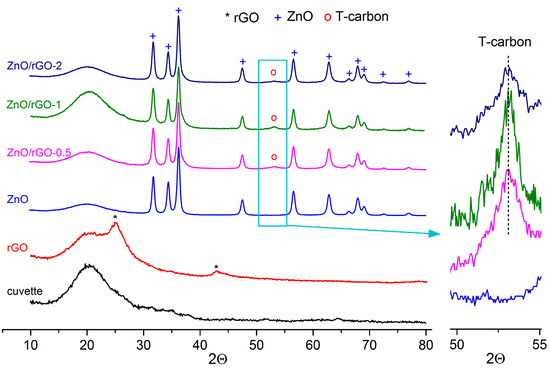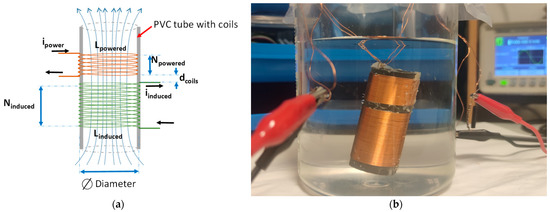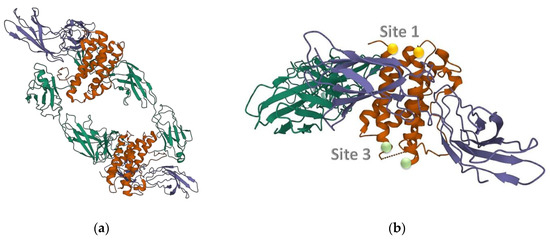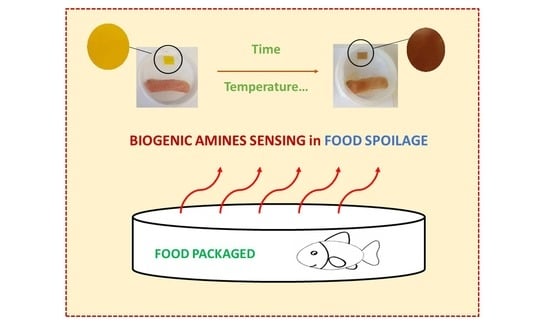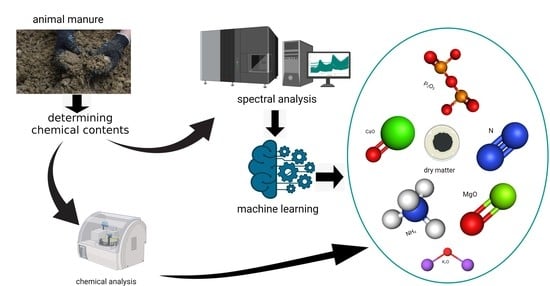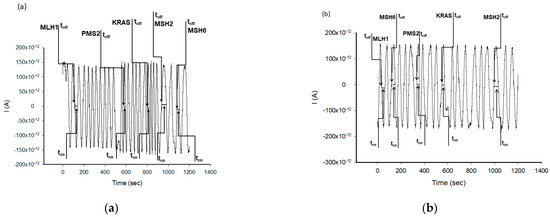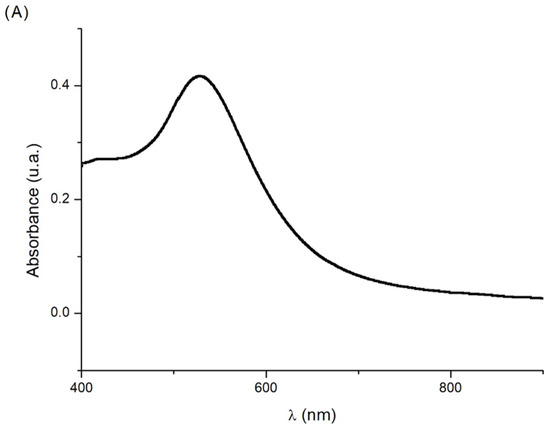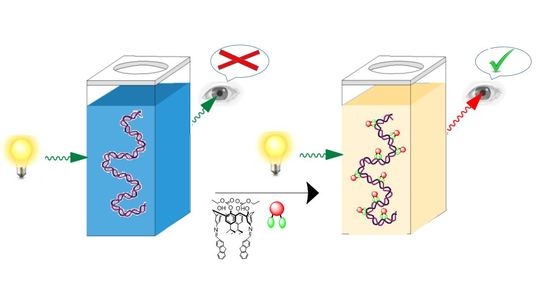Women Special Issue in Chemosensors and Analytical Chemistry
(Closed)
A topical collection in Chemosensors (ISSN 2227-9040).
Viewed by 45573
Share This Topical Collection
Editors
 Dr. Teresa Corrales
Dr. Teresa Corrales
 Dr. Teresa Corrales
Dr. Teresa Corrales
E-Mail
Website
Collection Editor
Instituto de Ciencia y Tecnología de Polímeros (ICTP-CSIC), Calle Juan de la Cierva 3, 28006 Madrid, Spain
Interests: fluorescent sensor for detection of pollutants; design/surface modification of polymers; degradation and stability; technologies considered environmental-friendly (photopolymerization, microwave irradiation and plasma treatment); polyelectrolites for batteries
 Prof. Dr. Nicole Jaffrezic-Renault
Prof. Dr. Nicole Jaffrezic-Renault
 Prof. Dr. Nicole Jaffrezic-Renault
Prof. Dr. Nicole Jaffrezic-Renault
E-Mail
Website
Collection Editor
Institute of Analytical Sciences, UMR CNRS 5280, Department LSA, 5 Rue de La Doua, 69100 Villeurbanne, France
Interests: biosensors; impedance; immunosensors; conductometric sensors; enzymatic sensors; affinity sensors
Special Issues, Collections and Topics in MDPI journals
Topical Collection Information
Dear Colleagues,
This Topical Collection in Chemosensors has been created to advocate for the advancement of Women in Science and Technology. This collection of articles will be open for permanent submission, and will provide a challenging space for women to gain visibility and promote their career progression. The aim is to contribute to the development of the principles of equality, diversity, and inclusion, and to lower gender barriers to academic progression worldwide.
This Women’s Special Issue Series is hosted by women editors and is intended as a tribute to women researchers. Submissions of women-led and all-women authorship articles are particularly encouraged. However, we welcome articles from all authors, regardless of gender, that include at least one woman. Our thematic collection accepts all articles in the scope of Chemosensors, dedicated to the science and technology of chemical sensors and related analytical methods and systems.
Dr. Teresa Corrales
Prof. Dr. Nicole Jaffrezic-Renault
Prof. Dr. Eleonora Alfinito
Collection Editors
Manuscript Submission Information
Manuscripts should be submitted online at www.mdpi.com by registering and logging in to this website. Once you are registered, click here to go to the submission form. Manuscripts can be submitted until the deadline. All submissions that pass pre-check are peer-reviewed. Accepted papers will be published continuously in the journal (as soon as accepted) and will be listed together on the collection website. Research articles, review articles as well as short communications are invited. For planned papers, a title and short abstract (about 100 words) can be sent to the Editorial Office for announcement on this website.
Submitted manuscripts should not have been published previously, nor be under consideration for publication elsewhere (except conference proceedings papers). All manuscripts are thoroughly refereed through a single-blind peer-review process. A guide for authors and other relevant information for submission of manuscripts is available on the Instructions for Authors page. Chemosensors is an international peer-reviewed open access monthly journal published by MDPI.
Please visit the Instructions for Authors page before submitting a manuscript.
The Article Processing Charge (APC) for publication in this open access journal is 2700 CHF (Swiss Francs).
Submitted papers should be well formatted and use good English. Authors may use MDPI's
English editing service prior to publication or during author revisions.
Published Papers (13 papers)
Open AccessReview
Overview of Various Components of Lateral-Flow Immunochromatography Assay for the Monitoring of Aflatoxin and Limit of Detection in Food Products: A Systematic Review
by
Thasmin Shahjahan, Bilal Javed, Vinayak Sharma and Furong Tian
Cited by 3 | Viewed by 3178
Abstract
The detection of aflatoxins is essential for the food industry to ensure the safety and quality of food products before their release to the market. The lateral-flow immunochromatography assay (LFIA) is a simple technique that allows the rapid on-site detection of aflatoxins. The
[...] Read more.
The detection of aflatoxins is essential for the food industry to ensure the safety and quality of food products before their release to the market. The lateral-flow immunochromatography assay (LFIA) is a simple technique that allows the rapid on-site detection of aflatoxins. The purpose of this review is to evaluate and compare the limits of detection reported in the most recent research articles, published between the years of 2015 and 2023. The limits of detection (LODs) were compared against the particle type and particle size, as well as other variables, to identify trends and correlations among the parameters. A growing interest in the use of different metal and non-metal nanoparticles was observed over the years of 2015–2023. The diameters of the nanoparticles used were reportedly between 1 nm and 100 nm. Most of these particles displayed lower LODs in the range of 0.01 to 1.0 ng/mL. Furthermore, there was a significant level of interest in detecting aflatoxin B1, perhaps due to its high level of toxicity and common appearance in food products. This study also compares the use of metallic and non-metallic nanoparticles in detecting aflatoxins and the dependence of nanoparticles’ sizes on the detection range. Overall, the type of particle and particle size used in the development of LFIA strips can affect the sensitivity and LOD; hence, the optimization of these parameters and their modulation with respect to certain requirements can enhance the overall assay performance in terms of the reproducibility of results and commercialization.
Full article
►▼
Show Figures
Open AccessArticle
Multitask Deep Learning-Based Pipeline for Gas Leakage Detection via E-Nose and Thermal Imaging Multimodal Fusion
by
Omneya Attallah
Cited by 14 | Viewed by 3642
Abstract
Innovative engineering solutions that are efficient, quick, and simple to use are crucial given the rapid industrialization and technology breakthroughs in Industry 5.0. One of the areas receiving attention is the rise in gas leakage accidents at coal mines, chemical companies, and home
[...] Read more.
Innovative engineering solutions that are efficient, quick, and simple to use are crucial given the rapid industrialization and technology breakthroughs in Industry 5.0. One of the areas receiving attention is the rise in gas leakage accidents at coal mines, chemical companies, and home appliances. To prevent harm to both the environment and human lives, rapid and automated detection and identification of the gas type is necessary. Most of the previous studies used a single mode of data to perform the detection process. However, instead of using a single source/mode, multimodal sensor fusion offers more accurate results. Furthermore, the majority used individual feature extraction approaches that extract either spatial or temporal information. This paper proposes a deep learning-based (DL) pipeline to combine multimodal data acquired via infrared (IR) thermal imaging and an array of seven metal oxide semiconductor (MOX) sensors forming an electronic nose (E-nose). The proposed pipeline is based on three convolutional neural networks (CNNs) models for feature extraction and bidirectional long-short memory (Bi-LSTM) for gas detection. Two multimodal data fusion approaches are used, including intermediate and multitask fusion. Discrete wavelet transform (DWT) is utilized in the intermediate fusion to combine the spatial features extracted from each CNN, providing spectral–temporal representation. In contrast, in multitask fusion, the discrete cosine transform (DCT) is used to merge all of the features obtained from the three CNNs trained with the multimodal data. The results show that the proposed fusion approach has boosted the gas detection performance reaching an accuracy of 98.47% and 99.25% for intermediate and multitask fusion, respectively. These results indicate that multitask fusion is superior to intermediate fusion. Therefore, the proposed system is capable of detecting gas leakage accurately and could be used in industrial applications.
Full article
►▼
Show Figures
Open AccessArticle
Room Temperature UV-Activated NO2 and NO Detection by ZnO/rGO Composites
by
Vadim Platonov, Nikolai Malinin, Roman Vasiliev and Marina Rumyantseva
Cited by 6 | Viewed by 2289
Abstract
Nanocomposites, including nanoparticles of semiconductor metal oxide (MO) and reduced graphene oxide (rGO), are of exceptional interest for light-activated gas sensors functioning without thermal heating. In this paper, we discuss the sensor properties of electrospun ZnO nanofibers and ZnO/rGO composites. The materials were
[...] Read more.
Nanocomposites, including nanoparticles of semiconductor metal oxide (MO) and reduced graphene oxide (rGO), are of exceptional interest for light-activated gas sensors functioning without thermal heating. In this paper, we discuss the sensor properties of electrospun ZnO nanofibers and ZnO/rGO composites. The materials were characterized by transmission and scanning electron microscopy (TEM, SEM), X-ray diffraction (XRD), X-ray photoelectron spectroscopy (XPS), and IR spectroscopy (FTIR). The sensor characteristics were studied when detecting reducing gases CO, H
2, and NH
3 and oxidizing gases NO and NO
2 at 25–150 °C in dark conditions and under UV illumination. ZnO nanofibers and ZnO/rGO composites have no sensitivity when detecting CO, NH
3, and H
2 either in dark conditions or under UV illumination. At T = 25 °C, UV illumination is a necessary condition for the appearance of a sensor response when detecting both NO and NO
2. The increased sensitivity of ZnO/rGO composites when detecting nitrogen oxides at T = 25 °C is discussed in terms of the heterojunction formation. Observed at T = 150 °C, opposite trends in the UV illumination influence on the sensor response toward NO and NO
2 are due to the participation of chemisorbed oxygen in the processes responsible for the sensor response formation when detecting NO.
Full article
►▼
Show Figures
Open AccessArticle
A Low-Cost Virtual Sensor for Underwater pH Monitoring in Coastal Waters
by
Sandra Viciano-Tudela, Lorena Parra, Sandra Sendra and Jaime Lloret
Cited by 2 | Viewed by 2750
Abstract
In coastal water monitoring, abrupt pH changes might indicate different pollution sources. Existing sensors for pH monitoring in coastal waters at low cost are mainly based on a glass membrane and a reference electrode. Virtual sensors are elements capable of measuring certain parameters
[...] Read more.
In coastal water monitoring, abrupt pH changes might indicate different pollution sources. Existing sensors for pH monitoring in coastal waters at low cost are mainly based on a glass membrane and a reference electrode. Virtual sensors are elements capable of measuring certain parameters based on data from other parameters or variables. The aim of this paper is to propose the use of a virtual pH sensor based on measuring different physical effects of H+ on the electromagnetic field generated by an inductor. Double inductors based on two solenoids of 40 and 80 spires are used as sensing elements. Samples with pH from 4 to 11 are used, and the effect of temperature is evaluated using samples from 10 to 40 °C. The induced voltage and the delay of the signal are measured for powering frequencies from 100 to 500 kHz. These data of delay, induced voltage, frequency, and temperature are included in a probabilistic neural network to classify these data according to the pH. The results indicate low accuracy for samples with a pH of 11. A second analysis, excluding these data, offered correctly classified cases of 88.9%. The system can achieve considerable high accuracy (87.5%) using data gathered at a single frequency, from 246 to 248 kHz. The predicted versus observed data is correlated with a linear model characterized by an R2 of 0.69, which is similar to the ones observed in other virtual sensors.
Full article
►▼
Show Figures
Open AccessArticle
Bioinspired Materials for Sensor and Clinical Applications: Two Case Studies
by
Eleonora Alfinito, Mariangela Ciccarese, Giuseppe Maruccio, Anna Grazia Monteduro and Silvia Rizzato
Viewed by 1585
Abstract
The growing interest in bio-inspired materials is driven by the need for increasingly targeted and efficient devices that also have a low ecological impact. These devices often use specially developed materials (e.g., polymers, aptamers, monoclonal antibodies) capable of carrying out the process of
[...] Read more.
The growing interest in bio-inspired materials is driven by the need for increasingly targeted and efficient devices that also have a low ecological impact. These devices often use specially developed materials (e.g., polymers, aptamers, monoclonal antibodies) capable of carrying out the process of recognizing and capturing a specific target in a similar way to biomaterials of natural origin. In this article, we present two case studies, in which the target is a biomolecule of medical interest, in particular, α-thrombin and cytokine IL-6. In these examples, different biomaterials are compared to establish, with a theoretical-computational procedure known as proteotronics, which of them has the greatest potential for use in a biodevice.
Full article
►▼
Show Figures
Open AccessArticle
Reversible Colorimetric and Fluorescence Solid Sensors Based on Aryl Hydrazone Derivatives of 1,8-Naphthalimides for Caustic Media and Biogenic Amine Vapors
by
Jesús L. Pablos, Sabela Fernández-Alonso, Fernando Catalina and Teresa Corrales
Cited by 2 | Viewed by 1989
Abstract
Fluorescence and colorimetric solid sensors for caustic media and biogenic amine vapors have been prepared. For this purpose, several hydrazone derivatives of naphthalimides were synthesized and anchored to a photo-crosslinked membrane functionalized with acid chloride groups. The membranes were characterized using different techniques,
[...] Read more.
Fluorescence and colorimetric solid sensors for caustic media and biogenic amine vapors have been prepared. For this purpose, several hydrazone derivatives of naphthalimides were synthesized and anchored to a photo-crosslinked membrane functionalized with acid chloride groups. The membranes were characterized using different techniques, and their thermal properties and swelling degree were determined. The new naphthalimides and the membranes were evaluated as sensors by determining the change in their spectroscopic properties of absorption and fluorescence with pH. The polymeric sensors exhibit improved stability and can be reused, as a consequence of their solid character and the reversibility of the process. Furthermore, membranes were evaluated as a sensor of trimethylamine vapors through their absorption and fluorescence bands, and the color change in the membrane showed that it could be used to detect basic media with the naked eye. Finally, membranes were packaged in Petri dishes at a controlled temperature with fresh fish bought in the local market. Then, the real chance of using the sensory materials was determined by analyzing the color change in samples.
Full article
►▼
Show Figures
Open AccessArticle
Using Near-Infrared Spectroscopy and Stacked Regression for the Simultaneous Determination of Fresh Cattle and Poultry Manure Chemical Properties
by
Elizabeth Cobbinah, Oliver Generalao, Sathish Kumar Lageshetty, Indra Adrianto, Seema Singh and Gerard G. Dumancas
Cited by 5 | Viewed by 3252
Abstract
Excessive use of animal manure as fertilizers can lead to pollution through the introduction of nitrogen, phosphorus, and other mineral compounds to the environment. Wet chemical analytical methods are traditionally used to determine the precise chemical composition of manure to manage the application
[...] Read more.
Excessive use of animal manure as fertilizers can lead to pollution through the introduction of nitrogen, phosphorus, and other mineral compounds to the environment. Wet chemical analytical methods are traditionally used to determine the precise chemical composition of manure to manage the application of animal waste to the soil. However, such methods require significant resources to carry out the processes. Affordable, rapid, and accurate methods of analyses of various chemical components present in animal manure, therefore, are valuable in managing soil and mitigating water pollution. In this study, a stacked regression ensemble approach using near-infrared spectroscopy was developed to simultaneously determine the amount of dry matter, total ammonium nitrogen, total nitrogen, phosphorus pentoxide, calcium oxide, magnesium oxide, and potassium oxide contents in both cattle and poultry manure collected from livestock production areas in France and Reunion Island. The performance of the stacked regression, an ensemble learning algorithm that is formed by collating the well-performing models for prediction was then compared with that of various other machine learning techniques, including support vector regression (linear, polynomial, and radial), least absolute shrinkage and selection operator, ridge regression, elastic net, partial least squares, random forests, recursive partitioning and regression trees, and boosted trees. Results show that stack regression performed optimally well in predicting the seven abovementioned chemical constituents in the testing set and may provide an alternative to the traditional partial least squares method for a more accurate and simultaneous method in determining the chemical properties of animal manure.
Full article
►▼
Show Figures
Open AccessArticle
Simultaneous Analysis of MLH1, MSH2, MSH6, PMS2 and KRAS in Patients with Gastric and Colon Cancer Using Stochastic Sensors
by
Damaris-Cristina Gheorghe, Raluca-Ioana Stefan-van Staden, Florina Pogacean and Stela Pruneanu
Cited by 7 | Viewed by 2059
Abstract
Two stochastic sensors were characterized and validated for the molecular identification and quantification of MLH1, MSH2, MSH6, PMS2 and KRAS in biological samples using two types of doped-graphene modified with maltodextrin. When a potential of 125 mV vs. Ag/AgCl was applied, the two
[...] Read more.
Two stochastic sensors were characterized and validated for the molecular identification and quantification of MLH1, MSH2, MSH6, PMS2 and KRAS in biological samples using two types of doped-graphene modified with maltodextrin. When a potential of 125 mV vs. Ag/AgCl was applied, the two stochastic sensors recorded extremely low limits of determination (fg mL
−1 magnitude order) and wide linear concentration ranges, which enabled the molecular identification and quantification of MLH1, MSH2, MSH6, PMS2 and KRAS in healthy individuals and patients with gastric or colon cancer. The recoveries of MLH1, MSH2, MSH6, PMS2 and KRAS in whole blood, saliva, urine and tumoral tissue samples exceeded 98.00% with a relative standard deviation of less than 1.00%.
Full article
►▼
Show Figures
Open AccessEditor’s ChoiceReview
Liquid Chromatography on the Different Methods for the Determination of Lipophilicity: An Essential Analytical Tool in Medicinal Chemistry
by
José X. Soares, Álvaro Santos, Carla Fernandes and Madalena M. M. Pinto
Cited by 27 | Viewed by 8257
Abstract
Lipophilicity is one of many parameters involved in the biological activity of drugs, as it affects their pharmacokinetic and pharmacodynamic behavior. Generally, lipophilicity is assessed by the partition coefficient of a compound between a nonpolar phase (
n-octanol) and an aqueous phase
[...] Read more.
Lipophilicity is one of many parameters involved in the biological activity of drugs, as it affects their pharmacokinetic and pharmacodynamic behavior. Generally, lipophilicity is assessed by the partition coefficient of a compound between a nonpolar phase (
n-octanol) and an aqueous phase (water), expressed as P (partition coefficient) or as its decimal logarithm (Log P). The gold standard method for the experimental determination of Log P is the shake-flask method. In this context, chromatographic methods enable the direct and simple quantification of the partitioned compound between the two phases. This review discusses the use of liquid chromatography (LC) for direct and indirect determination of lipophilicity. Beyond the classical isotropic log P determination, methods for assessing anisotropic lipophilicity are also reviewed. Several examples are discussed that highlight the versatility of LC technique and current trends. The last section of this review focuses on a case study describing an experience of our group and emphasizing the dual role of LC in determining Log P.
Full article
►▼
Show Figures
Open AccessArticle
How Meaningful Are Minor Details in the Generation of Nanomodified Electrochemical Enzyme Biosensors? Exploring the Scenario with Sinusoidal Approaches
by
Md. Towhidur Rahman, David López-Iglesias, Alfonso Sierra-Padilla, Juan José García-Guzmán, Laura M. Cubillana-Aguilera, Dolores Bellido-Milla and José María Palacios-Santander
Viewed by 2168
Abstract
In this work, a screening of Sonogel-Carbon (SNGC) electrodes modified with nanomaterials (carbon nanotubes and gold nanoparticles) and the study of their effect on the electrochemical performance of sinusoidal voltage (SV) and current (SC)-based biosensors are reported. Surface modification was achieved by drop-casting
[...] Read more.
In this work, a screening of Sonogel-Carbon (SNGC) electrodes modified with nanomaterials (carbon nanotubes and gold nanoparticles) and the study of their effect on the electrochemical performance of sinusoidal voltage (SV) and current (SC)-based biosensors are reported. Surface modification was achieved by drop-casting and electrodeposition methodologies. Within the strategies used, SV and SC, recently exploited procedures, were used to electrodeposit simultaneously a poly 3,4-ethylenedioxythiophene (PEDOT)-tyrosinase layer and the corresponding nanostructured material. Dopamine was selected as a benchmark analyte to evaluate the analytical performance of the different (bio)sensors obtained in terms of relevant figures of merit, such as sensitivity, limits of detection and quantitation, and accuracy, among others. A discussion about the pros and cons between the type of modification and the methods employed is also presented. Briefly, SC based sensors offered excellent quality analytical parameters and lower dispersion of the results. They were employed for more specific electrochemical studies, including interferences assays and the determination of DA in real samples, obtaining good recoveries (101–110.6%). The biosensor modified with gold nanoparticles (AuNPs) (drop-casting method) and SC-electrodeposited showed the best figures of merit: R
2 = 0.999; sensitivity = −4.92 × 10
−9 A·µM
−1; RSD
sensitivity = 1.60%; LOD = 5.56 µM; RSD
LOD = 6.10%; and LOQ = 18.53 µM.
Full article
►▼
Show Figures
Open AccessArticle
Fluorescent Calixarene-Schiff as a Nanovehicle with Biomedical Purposes
by
José Antonio Lebrón, Manuel López-López, María Luisa Moyá, Mary Deasy, Ana Muñoz-Wic, Clara Beatriz García-Calderón, Iván Valle Rosado, Pilar López-Cornejo, Eva Bernal and Francisco José Ostos
Cited by 4 | Viewed by 2781
Abstract
Gene therapy is a technique that is currently under expansion and development. Recent advances in genetic medicine have paved the way for a broader range of therapies and laid the groundwork for next-generation technologies. A terminally substituted difluorene-diester Schiff Base calix[4]arene has been
[...] Read more.
Gene therapy is a technique that is currently under expansion and development. Recent advances in genetic medicine have paved the way for a broader range of therapies and laid the groundwork for next-generation technologies. A terminally substituted difluorene-diester Schiff Base calix[4]arene has been studied in this work as possible nanovector to be used in gene therapy. Changes to luminescent behavior of the calixarene macrocycle are reported in the presence of ct-DNA. The calixarene macrocycle interacts with calf thymus DNA (ct-DNA), generating changes in its conformation. Partial double-strand denaturation is induced at low concentrations of the calixarene, resulting in compaction of the ct-DNA. However, interaction between calixarene molecules themselves takes place at high calixarene concentrations, favoring the decompaction of the polynucleotide. Based on cytotoxicity studies, the calixarene macrocycle investigated has the potential to be used as a nanovehicle and improve the therapeutic efficacy of pharmacological agents against tumors.
Full article
►▼
Show Figures
Open AccessReview
Review—Recent Progress in Graphene Based Modified Electrodes for Electrochemical Detection of Dopamine
by
Zouhour Hsine, Rym Mlika, Nicole Jaffrezic-Renault and Hafsa Korri-Youssoufi
Cited by 31 | Viewed by 3920
Abstract
Graphene and its derivatives have been widely used for the electrochemical detection of dopamine (DA) neurotransmitter, thanks to its high surface area and excellent conductivity. Modified graphene and graphene-based nanocomposites have shown improved catalytic activity towards DA detection. Various modification approaches have been
[...] Read more.
Graphene and its derivatives have been widely used for the electrochemical detection of dopamine (DA) neurotransmitter, thanks to its high surface area and excellent conductivity. Modified graphene and graphene-based nanocomposites have shown improved catalytic activity towards DA detection. Various modification approaches have been taken, including heteroatom doping and association with other nanomaterials. This review summarizes and highlights the recent advances in graphene-based electrodes for the electrochemical detection of DA. It also aims to provide an overview of the advantages of using polymer as a linker platform to form graphene-based nanocomposites applied to electrochemical DA sensors.
Full article
►▼
Show Figures
Open AccessReview
E-Senses, Panel Tests and Wearable Sensors: A Teamwork for Food Quality Assessment and Prediction of Consumer’s Choices
by
Margherita Modesti, Alessandro Tonacci, Francesco Sansone, Lucia Billeci, Andrea Bellincontro, Gloria Cacopardo, Chiara Sanmartin, Isabella Taglieri and Francesca Venturi
Cited by 18 | Viewed by 4021
Abstract
At present, food quality is of utmost importance, not only to comply with commercial regulations, but also to meet the expectations of consumers; this aspect includes sensory features capable of triggering emotions through the citizen’s perception. To date, key parameters for food quality
[...] Read more.
At present, food quality is of utmost importance, not only to comply with commercial regulations, but also to meet the expectations of consumers; this aspect includes sensory features capable of triggering emotions through the citizen’s perception. To date, key parameters for food quality assessment have been sought through analytical methods alone or in combination with a panel test, but the evaluation of panelists’ reactions via psychophysiological markers is now becoming increasingly popular. As such, the present review investigates recent applications of traditional and novel methods to the specific field. These include electronic senses (e-nose, e-tongue, and e-eye), sensory analysis, and wearables for emotion recognition. Given the advantages and limitations highlighted throughout the review for each approach (both traditional and innovative ones), it was possible to conclude that a synergy between traditional and innovative approaches could be the best way to optimally manage the trade-off between the accuracy of the information and feasibility of the investigation. This evidence could help in better planning future investigations in the field of food sciences, providing more reliable, objective, and unbiased results, but it also has important implications in the field of neuromarketing related to edible compounds.
Full article
►▼
Show Figures








